|
There is a method of protection against many infections which is not expensive and which can be very effective. The method involves the use of colloidal silver, which is a suspension of very, very tiny charged particles of pure silver suspended in distilled water. I have had e-mails from people who have had very satisfactory results, working from the information in this document, and I myself, have found it to be most helpful Due to legal considerations, please understand that just because the following information is presented here, it must not be considered to be a recommendation from me that you should follow the procedure or inhale, drink or in any other way use the resulting liquid. Nor are any representations made to the effectiveness or otherwise of this or any other related procedure. The following material must be considered to be presented here solely for information purposes and not a recommendation that you or anyone else should make or use this substance. Having said that, let me explain that my friend Ravi Raju in India has made and used colloidal silver very successfully for more than two years and both he and the members of his family have experienced highly positive effects from it. Making Colloidal Silver. In broad outline, all that is necessary is to apply a DC voltage to two electrodes made from 99.99% pure silver, placed in distilled water for about ten minutes. The lower the current flowing through the water, the smaller the size of the silver particles suspended in the water, and the smaller the particle size, the more effective the colloidal silver becomes. Here are some additional facts about colloidal silver, prepared electrically as described here:
Please note that you don't drink out of the glass container with the colloidal silver in it as your lips will pass additional materials into the remaining colloidal silver, wasting much of the charge and quite possibly causing a brownish colour in the remaining colloidal silver. Instead, you pour the amount of colloidal silver that you want, into another non-metal container before using it. If taking it orally, then some should be held under the tongue for at least one minute as the silver particles enter the bloodstream easily through the skin beneath the tongue and they do not have to contend with the acid in the stomach. If you are applying it externally (which is very effective for skin complaints) then just tip a little into the cupped palm of one hand and apply it from there. It is highly likely that colloidal silver will enter your bloodstream through your skin and be beneficial throughout all of your body as well as improving your skin. Either way, the important thing is that the colloidal silver is kept in a dim place and does not come into contact with sunlight which will affect the charged silver particles in the water and ensure that it only touches the glass container until it is being used. Making colloidal silver To keep the current low, I use a 5-volt battery comprising four 1.2V Ni-Mh AA-size rechargeable batteries in a battery holder box. These, bought through eBay were very low-cost and should last for many years. 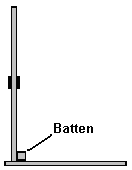 Thick silver wire is recommended, but I have never been able to find a supplier and so, I bought thin silver wire from Cricklewood Electronics, bending the wire in a zig-zag fashion backwards and forwards in order to give a good deal of under water surface area on each electrode. As the process continues, the water is stirred with a glass rod although plastic or wood can be used, but not metal as that will react with the charged silver particles. After a few minutes, the silver wire which is connected to the minus terminal of the battery, will become coated with a black substance. This needs to be cleaned off. Ravi uses sterile cotton wool for this while I use a clean tissue for the cleaning. As time goes by, the rate at which the black coating develops increases as the water becomes much more able to carry current from the battery. Do not use any kind of chemicals to clean the silver – the purity of the water, silver is vital and glassware needs to be used. The silver wire connected to the positive terminal of the battery develops a dull grey coating which needs to be cleaned off occasionally. I generally continue the process until I have cleaned off the negative electrode four or five times using a clean tissue. Most people have a slightly different method for producing and using colloidal silver. In passing, “colloidal” just means that the silver particles are too small to drop out of the water under gravity and so, stay dispersed throughout the water indefinitely. The end product should be clear and look exactly like water (which it mainly is). If you shine a laser light such as a lecture pointer into the colloidal silver, it looks very pretty, lighting up with thousands of little sparkles as the light is reflected off the silver particles. If you want to be very ‘scientific’ about the process, then you can determine the actual concentration of silver particles in the water using a cheap (£5) TDS PPM meter which gives a readout in Parts Per Million. Dorron Shapir uses one of those as a monitor for his production of colloidal silver. He starts with a voltage of 17 volts from a mains DC unit, stirring periodically. When his PPM meter shows a concentration of 4 ppm, he lowers the voltage to 9V and continues until 8 ppm is reached. Finally, he lowers the voltage to 6V until the finishing point of 10 ppm is reached. The continual reduction of the voltage is to produce silver particles of small size as they are the most effective. The concentration needs to be anywhere from 5 ppm to 10 ppm and higher concentrations are no more effective than a 10 ppm concentration. Ravi uses 27 volts continuously. The current flow through the distilled water depends very much on the spacing between the electrodes. The further apart the electrodes are, the smaller the current for any given voltage. Ravi’s electrodes are spaced far apart, which accounts for the high voltage which he uses. As I do, he bends the ends of the silver wire over the lip of the glass container holding the distilled water, and clips a wire over the top of the loop so as to make an electrical connection as well as clamping the silver wire to the glass container. I use a small glass tumbler of about 50 mm (2-inches) inside diameter and some 65 mm (2.5 inches) tall and position the electrodes so that they are about 12 mm (half an inch) apart. This method looks like this: 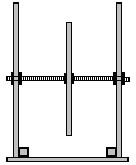 Dorron uses a lid to support the silver wires and to keep the electrodes at his chosen spacing, as shown here: 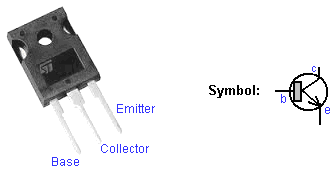 Ravi uses much wider electrode spacing as shown here  A more advanced method Mike Lexa presents an improved technique here. He says: First of all, colloidal silver produced in the above process is not good for internal use. It will not cause any harm, but silver particles released from silver wires are too big to penetrate bacteria or virus cells. Silver particles must by only few nanometers in size if they are to be able to penetrate cell membranes. The smaller a silver particle is, the more effective it is. The technique for making more effective colloidal silver is: The operating current must not exceed 0.155 milliamps per square centimetre of one submerged electrode. So, for example, if each electrode has 3 square centimetres of submerged surface area, then the maximum current should be three times the 0.155 mA figure which is 0.465 milliamps. If you were to supply more than that, then the resulting particles of silver will be too large to be fully effective. As the current is so low, using three 9-volt batteries is a perfectly good idea, although, a small mains unit could be used instead, if its output voltage is sufficiently high (say, 40 volts). An easy way to arrange the controlled power supply is to use a current regulator as shown here: 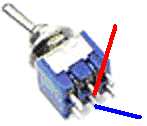 If you are not familiar with electronic components or how to put them together, then the free download electronics beginner’s tutorial should be helpful as it describes electronic components and shows how to assemble them into circuits. In this circuit, the resistor R1 controls how much current will flow in the circuit and the resistor R2 needs to be ten times higher in value than R1. For example, if the desired current were 3 milliamps (0.003 amps) then the resistor R1 would have a value of 0.134 divided by our desired 0.003 amps, giving us an R1 resistor value of 44.7 ohms. This is not a standard resistor size, so the next higher value is picked (as we do not want to exceed our chosen current) and that would be a 47 ohm resistor and as R2 is ten times bigger, we would use a 470 ohm resistor. Using 5% tolerance resistors is recommended. As the power in the circuit is trivial, any wattage of resistors can be used, and the 1N4148 diode shown can in fact be any silicon, small-signal diode. Some example results are: R1 = 1K, R2 = 10K, current = 0.13 milliamps. R1 = 100 ohms, R2 = 1K, current = 1.38 milliamps. R1 = 47 ohms, R2 = 470 ohms, current = 3.02 milliamps. The wetted surface area of an electrode is worked out like this: 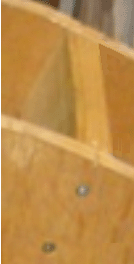 If the wetted length is L and the wire diameter is D, then the surface area is 3.14159 x D x L. For example, if the wire diameter is 3 mm and the wetted length is 70 mm, then, as there are ten millimeters in one centimeter, the area would be 3.14159 x 0.3 x 7 which is 6.6 square centimeters and so the maximum current for that situation would be 0.155 x 6.6 = 1.0 milliamps, giving resistor values of 134 ohms and 1340 ohms, which could be 150 and 1500 ohms, or two resistors could be used to get a very close value, say 120 + 15 and 1200 + 150. The wetted area of just one of the two electrodes is used for calculating the current. However, a second suggestion in ensuring small silver particle size is to keep swapping over the electrical supply to the silver electrodes every 20 seconds. As you will be supervising the production of the colloidal silver during the period of time when it is being produced, in order to stir the water on a regular basis, a simple two-pole changeover switch can be used to manually swap the electrical supply to the electrodes. That addition to the circuit looks like this  The physical interconnections are not difficult to do and could be arranged like this: 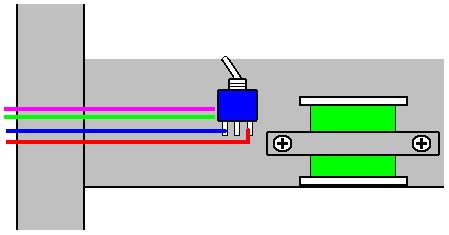 An important thing is to stir the solution frequently, to prevent the silver particles clustering together. Personally, I gently stir the water continuously as I only make a small amount at any one time, and this takes only twelve minutes or so. With this system, it takes about 110 minutes to make 200 ccs of colloidal silver, but that solution will keep for about two weeks if stored properly. It needs to be made in low lighting and then stored in a dark bottle in a dark place (not the fridge) as light will discharge the small silver particles which are held in the water by their charge. If that charge is lost, then the particles are said to sink to the bottom and cluster there, although I have never seen this happen. The colloidal silver solution produced should be almost clear or failing that, a light milky colour. The particles are so small, that the silver wire never looks any different The water itself is very important as it needs to be top quality distilled water, or the water used for medical injections, or water from a distiller or dehumidifier. Tap water is unsuitable because it contains minerals which contaminate the solution and are highly undesirable, negating most of the benefits of the colloidal silver. If you are monitoring the current, then when first switched on, the current reading should be very low and it should rise gradually as silver particles are released into the water. The current should stop rising at the chosen level if a constant-current circuit is being used. After stirring, the current should go down for while for first few times. Mike Lexa says: the electrodes should be 20mm to 25 mm apart. For cleaning I use a new kitchen sponge with an abrasive back. Steel wool is not suitable as it will contaminate the electrodes, while sandpaper is too abrasive. The most important factors are the current level and frequent stirring. My home-made apparatus looks like this:   Using colloidal silver It is possible to use colloidal silver by taking two teaspoonfuls (with a plastic spoon), holding it under the tongue for at least one minute and then swallowing it - that is the complete dosage. Holding it in the mouth is effective as the silver particles pass quickly through the thin skin covering the inside of the mouth, and doing this fully sterilises the whole of the mouth. However, another good way is to use an ordinary nebuliser as that makes sure that only the tiniest particles are absorbed. For this, the water is placed in the reservoir of an standard nebuliser as shown here:  The nebuliser is then assembled and switched on. The lungs are filled completely by breathing in through the nebuliser using the mouth. The next full breath is then taken through the nose. Doing this for 6 to 7 minutes is quite sufficient. This would normally be done once per day, just before going to bed at night, but if there is a really severe infection, then twice per day is recommended. While it is possible to store the colloidal silver solution in a brown glass bottle placed in a cool dark cupboard, most people prefer to make up a new solution each day as this is quick to do. To be sure that the water is fully charged, it is definitely worth while to make up a new batch each time and if that is done, then only a small amount of distilled water need be used and the process is quick. When stirring the water, be sure not to brush the silver wire which gets the black coating as that can dislodge black particles which contaminate the water, turning it dark and making it unusable. If you are using a nebuliser which only takes a few millilitres, then a small glass container can be used, although more care is needed when stirring to avoid brushing against the wires. While I am highly reluctant to make spectacular claims for this process - claims which will sound like a "snake oil" pitch, but it is only reasonable that you should be informed of what the effects have been in past cases. As this information comes from a highly reliable and experienced source, it should be considered carefully no matter what your final opinion is. 1. This process has cured cancer patients who have been diagnosed as being terminally ill. 2. It has neutralised all known viruses and harmful bacteria, including AIDS. 3. It has overcome chronic pain from arthritis. 4. There is direct experience of six different people being cured of serious lung conditions. 5. One person has had severe diabetes reduced to just a very mild form. I do apologise for presenting a list like this, especially since some of these actual cases sound so improbable, but as these are genuine, bona fide results of treatment attested to by a most reliable source, it is difficult not to present the facts, no matter how difficult readers may find it to accept them. Unfortunately, it gets worse, much worse. You are probably not aware of it, but the structure of water is affected by thoughts, and not just the thoughts of some special, gifted mentalist, but the thoughts of ordinary people such as you and me. Hard to believe, isn’t it? However, it has been proved over and over again. One well-known demonstrator of this effect is Mr Masaru Emoto www.masaru-emoto.net who has shown that the thoughts of ordinary members of the public can alter the structure of water without there being any actual physical contact with the water. If the water receives positive thoughts and is then frozen, the resulting crystal structure will be like this:  While on the other hand, if negative thoughts are aimed at the water, whether just by looking at it and thinking, or by writing those thoughts down on paper, the resulting crystal shape is quite different when the water is frozen, as shown here:  I can personally vouch for the fact that thought can have a powerful effect over a distance of some miles and while that fact may seem completely alien to your present view of the world around you, you do need to become aware of facts which affect you personally. This does relate to the production of colloidal silver as stressed by Dorron Shapir who is experienced in this field, having used colloidal silver for six years now. He says: a friend of mine had prostate cancer. I made him 10 litres of 10 ppm colloidal silver and his cancer was completely gone within a month. When making colloidal silver, do it in dim light or darkness. Use a dark glass container to store the colloidal silver and keep it well away from sunlight. You can then structure the colloidal silver further by one of several methods: you could stick a label on the jar, saying LOVE AND GRATITUDE, or you could place the jar in a home-made metal pyramid (aligned North-South) for half an hour, or you could place the jar on top of a Karl Welz Orgone generator water structuriser (www.chi-tec.com). Please understand that for the process to be successful, the person making the colloidal silver must NOT be feeling anger or hatred as those thoughts completely destroy the structure of the water. Patrick J. Kelly www.free-energy-info.tuks.nl |